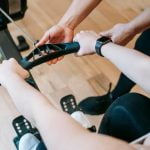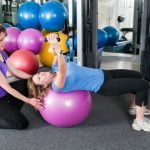Physical fitness is essential for overall health and well-being, and exercise is a crucial component of achieving and maintaining it. In today’s fast-paced world, finding the time and motivation to exercise can be challenging, but understanding the importance of physical activity can provide the necessary drive to prioritize it in our lives.
In this article, we will explore the significance of exercise for physical fitness and provide practical tips on how to incorporate it into our daily routines.
Setting specific, measurable, achievable, relevant, and time-bound fitness goals is fundamental for making progress and staying motivated in our fitness journey. Understanding the different types of exercises for cardiovascular health, strength training, flexibility, and balance is also crucial for creating a well-rounded workout routine. Additionally, we will delve into the role of nutrition in supporting physical fitness and discuss the significance of rest, recovery, and sleep in achieving optimal exercise performance.
By exploring these topics and providing strategies for overcoming exercise plateaus, we aim to equip our readers with the knowledge and inspiration needed to make regular exercise an integral part of their lives. Join us as we delve into the myriad benefits of regular exercise and discover how it can enhance not only our physical health but also our mental and emotional well-being. Let’s embark on this journey together towards improved physical fitness through exercise.
Setting Fitness Goals
One example of a SMART fitness goal is “I will jog for 30 minutes without stopping three times a week for the next two months in order to improve my cardiovascular health and endurance.” This goal is specific (jogging for 30 minutes), measurable (three times a week), achievable (realistic for many people), relevant (improving cardiovascular health), and time-bound (two months).
By setting such specific and targeted fitness goals, individuals can effectively plan out their workout routines and work towards achieving long-term success.
By understanding the importance of setting SMART fitness goals, individuals can enhance their exercise experience by staying focused and disciplined. Whether aiming to lose weight, build muscle, improve flexibility or boost endurance, having clearly defined objectives can significantly increase the likelihood of reaching desired fitness outcomes.
| Types of Exercises | Description |
|---|---|
| Cardiovascular Exercises | Activities that raise the heart rate such as running, swimming, cycling |
| Strength Training | Resistance exercises like weightlifting that build muscle mass |
| Flexibility Exercises | Stretches that improve range of motion in joints |
Types of Exercises
Cardiovascular Exercises
Cardiovascular exercises, also known as aerobic exercises, are activities that increase your heart rate and breathing while using large muscle groups. These types of exercises improve the health of your heart, lungs, and circulatory system. Some common cardiovascular exercises include running, walking, cycling, swimming, and dancing. It is recommended to engage in at least 150 minutes of moderate-intensity aerobic exercise or 75 minutes of vigorous-intensity aerobic exercise per week for overall health benefits.
Strength Training
Strength training exercises are essential for building and maintaining muscle mass and bone density. These exercises involve using resistance from free weights, resistance bands, or even your own body weight to strengthen muscles. Strength training can improve your metabolism and help with weight management. It is important to perform strength training exercises for all major muscle groups at least twice a week.
Flexibility and Balance Exercises
Flexibility and balance exercises are often overlooked but are crucial for overall physical fitness. Stretching exercises can help improve flexibility, reduce the risk of injury, and relieve muscle tension. Balance exercises can enhance stability and reduce the risk of falls, especially in older adults. Yoga, tai chi, and Pilates are great examples of activities that focus on flexibility and balance.
By incorporating these different types of exercises into your workout routine, you can achieve a well-rounded approach to physical fitness that not only improves your overall health but also enhances your quality of life.
Creating a Workout Routine
Creating a well-rounded workout routine is essential for maintaining physical fitness. It is important to include a variety of exercises that target different aspects of fitness, including aerobic endurance, strength, flexibility, and balance. A good workout routine should be comprehensive and balanced in order to promote overall physical health and well-being.
Including aerobic exercises in your workout routine is crucial for cardiovascular health. Activities such as running, cycling, swimming, and dancing can help improve heart and lung function while also burning calories and boosting metabolism. It is recommended to engage in at least 150 minutes of moderate-intensity aerobic exercise per week for optimal health benefits.
Strength training is another important component of a well-rounded workout routine. This type of exercise helps build and maintain muscle mass, increase bone density, and improve metabolism. Incorporating resistance training using free weights, machines, or body weight exercises can help enhance strength and endurance while reducing the risk of injury.
Flexibility and balance exercises are often overlooked but are equally important for overall fitness. Stretching routines such as yoga or Pilates can improve flexibility and range of motion, leading to better posture and reduced muscle tension. Balance exercises like Tai Chi or stability ball workouts can help prevent falls and enhance coordination.
Incorporating these various types of exercises into your workout routine can lead to significant improvements in physical fitness. By focusing on aerobic endurance, strength training, flexibility, and balance exercises, individuals can achieve a well-rounded approach to fitness that promotes overall health and wellness.
| Exercise Type | Recommendation |
|---|---|
| Aerobic | At least 150 minutes per week of moderate-intensity aerobic exercise |
| Strength Training | Include resistance training at least 2 days per week targeting major muscle groups |
| Flexibility/Balance | Incorporate stretching or balance exercises into your routine at least two days per week |
Nutrition and Exercise
Understanding the Relationship Between Nutrition and Exercise
Nutrition and exercise are closely intertwined when it comes to achieving optimal physical fitness. Proper nutrition provides the fuel and nutrients that our bodies need to perform exercise effectively, while regular physical activity helps us maintain a healthy metabolism and utilize those nutrients efficiently. Consuming a well-balanced diet that includes lean proteins, complex carbohydrates, healthy fats, vitamins, and minerals is essential for supporting exercise performance and recovery.
Hydration for Exercise
Staying hydrated is also crucial for optimal exercise performance. Water plays a vital role in regulating body temperature, transporting nutrients, and lubricating joints during physical activity. It’s important to drink an adequate amount of water before, during, and after exercise to prevent dehydration and support overall fitness.
Pre-Workout and Post-Workout Nutrition
What we eat before and after exercising can significantly impact our energy levels, muscle recovery, and overall fitness progress. Consuming a balanced meal or snack that includes carbohydrates for energy, protein for muscle repair, and some healthy fats before a workout can help improve performance.
After exercising, refueling with a combination of protein and carbohydrates can aid in muscle recovery and replenish glycogen stores. Planning nutritious pre-workout and post-workout meals or snacks can enhance the benefits of physical activity on our bodies.
Importance of Rest and Recovery
Rest and recovery are essential components of any fitness regimen, as they play a crucial role in achieving and maintaining physical fitness. It is important to understand the significance of rest, recovery, and sleep in order to support the body’s ability to perform optimally during exercise and to avoid burnout or injury. Here are some key points to consider when emphasizing the importance of rest and recovery:
- Recovery Allows Muscles to Repair and Rebuild: After engaging in physical activity, the body requires time to repair and rebuild muscles that have been stressed during exercise. Adequate rest allows for this process to take place, which can help prevent injuries and improve overall muscle strength.
- Sleep is Essential for Recovery: Quality sleep is essential for both physical and mental recovery. During sleep, the body undergoes important processes such as muscle repair, hormone regulation, and memory consolidation. Aim for seven to nine hours of quality sleep each night to support your fitness goals.
- Preventing Overtraining: Without sufficient rest and recovery, individuals may experience symptoms of overtraining, which can include fatigue, decreased performance, mood disturbances, increased risk of injury, and disrupted sleep patterns. By incorporating rest days into your workout routine and allowing time for recovery between intense sessions, you can avoid overtraining syndrome.
Incorporating rest and recovery practices into your fitness routine is just as important as the exercises themselves. When we allow our bodies time to recover properly from physical activity through adequate rest and sleep, we are supporting our overall physical fitness goals while reducing the risk of burnout or injury. Remember that prioritizing rest and recovery as part of your wellness journey will contribute to long-term success in achieving optimal physical fitness.
Overcoming Exercise Plateaus
When it comes to maintaining a consistent exercise routine, many individuals may encounter exercise plateaus. These plateaus can be both physically and mentally challenging, causing frustration and a lack of motivation. However, there are various strategies that can be implemented to overcome these plateaus and continue making progress in physical fitness. Some key strategies include:
- Changing up Your Routine: One effective way to overcome an exercise plateau is by changing your workout routine. This could involve trying new exercises, increasing the intensity or duration of your workouts, or incorporating different types of physical activities such as swimming or cycling.
- Setting New Goals: Setting new fitness goals can provide the motivation needed to push through an exercise plateau. By establishing specific, measurable, achievable, relevant, and time-bound goals, individuals can refocus their efforts and work towards something new and exciting.
- Seeking Support and Accountability: Joining a fitness class or partnering with a friend can provide the necessary support and accountability to overcome exercise plateaus. Having someone else to workout with can make exercising more enjoyable and help individuals stay on track with their fitness goals.
Overcoming exercise plateaus is critical for continued physical fitness progress. By implementing these strategies and staying committed to regular exercise, individuals can break through plateaus, maintain motivation, and continue making strides towards optimal physical health and well-being. Remember that everyone experiences plateaus at some point in their fitness journey – what’s important is how you respond to them.
Benefits of Regular Exercise
Regular exercise offers a wide range of benefits that extend beyond physical health. It is well-known that engaging in regular physical activity can improve cardiovascular health, increase muscle strength, and promote weight management. However, the benefits of exercise go far beyond just these physical improvements.
Regular exercise has been proven to have significant positive effects on mental health as well. Exercise stimulates the production of endorphins, often referred to as “feel-good” hormones, which can help reduce stress and anxiety, alleviate symptoms of depression, and boost overall mood and happiness.
In addition to the mental benefits, regular exercise also has a profound impact on emotional well-being. Engaging in physical activity can help improve self-esteem and body image, leading to a greater sense of confidence and self-worth. Furthermore, the social aspect of exercising – whether it’s participating in group fitness classes or going for a run with a friend – can help foster relationships and provide a sense of community and belonging.
It’s important to recognize the interconnectedness of physical, mental, and emotional health when it comes to regular exercise. By incorporating a consistent workout routine into your lifestyle, you can experience improvements across all three domains, leading to an overall higher quality of life.
Conclusion
In conclusion, maintaining physical fitness through regular exercise is essential for overall health and well-being. Setting specific, measurable, achievable, relevant, and time-bound fitness goals is crucial for motivation and progress. It’s important to incorporate a variety of exercises into a well-rounded workout routine, including cardiovascular, strength training, flexibility, and balance exercises.
Nutrition plays a key role in supporting physical fitness and optimizing exercise performance, so it’s important to pay attention to what we eat as well. Additionally, adequate rest, recovery, and sleep are essential for achieving and maintaining physical fitness.
Overcoming exercise plateaus can be challenging, but with the right strategies and mindset, it is possible to maintain motivation for continued progress. The benefits of regular exercise cannot be understated – it not only improves physical health but also has positive effects on mental and emotional well-being. By incorporating exercise into our daily lives, we can experience improved physical fitness as well as lower stress levels and enhanced mood.
Ultimately, the key to maintaining physical fitness through exercise is consistency and dedication. By making small changes to incorporate more movement into our daily routine and being mindful of what we eat, we can make significant strides towards achieving our fitness goals. It’s important to remember that every little bit of activity counts and that progress takes time. With determination and commitment, anyone can achieve improved physical fitness through regular exercise.
Frequently Asked Questions
How to Maintain Body Shape With Exercise?
Maintaining body shape with exercise involves a combination of cardiovascular, strength training, and flexibility exercises. Cardiovascular activities like running, cycling, or dancing help burn calories and improve heart health. Strength training exercises using weights or resistance bands help build muscle and increase metabolism. Lastly, incorporating flexibility exercises such as yoga or stretching helps to improve mobility and prevent injury.
How Exercise Keeps Our Bodies Fit?
Exercise keeps our bodies fit by providing a wide range of physical and mental benefits. Regular physical activity helps to improve cardiovascular health, maintain a healthy weight, and increase muscle strength and endurance. Exercise also releases endorphins, which can reduce stress and improve mood. Additionally, it helps to improve posture, balance, and flexibility.
What Exercises Keep You in Shape?
The exercises that keep you in shape vary depending on individual preferences and goals. However, a well-rounded exercise routine typically includes a mix of cardio, strength training, and flexibility exercises. Cardiovascular activities like running, swimming, or group fitness classes help burn calories and improve endurance.
Strength training exercises using weights or resistance bands help build muscle and increase metabolism. Flexibility exercises like yoga or Pilates help improve range of motion and prevent injury. Ultimately, finding the right combination of exercises that work for you is key to staying in shape.

Passionate about providing useful information to anyone with an interest in the field of Personal Training, I strive to pass on to our readers quality information and to answer any questions about Personal Trainers, the work they do and how to become one.





